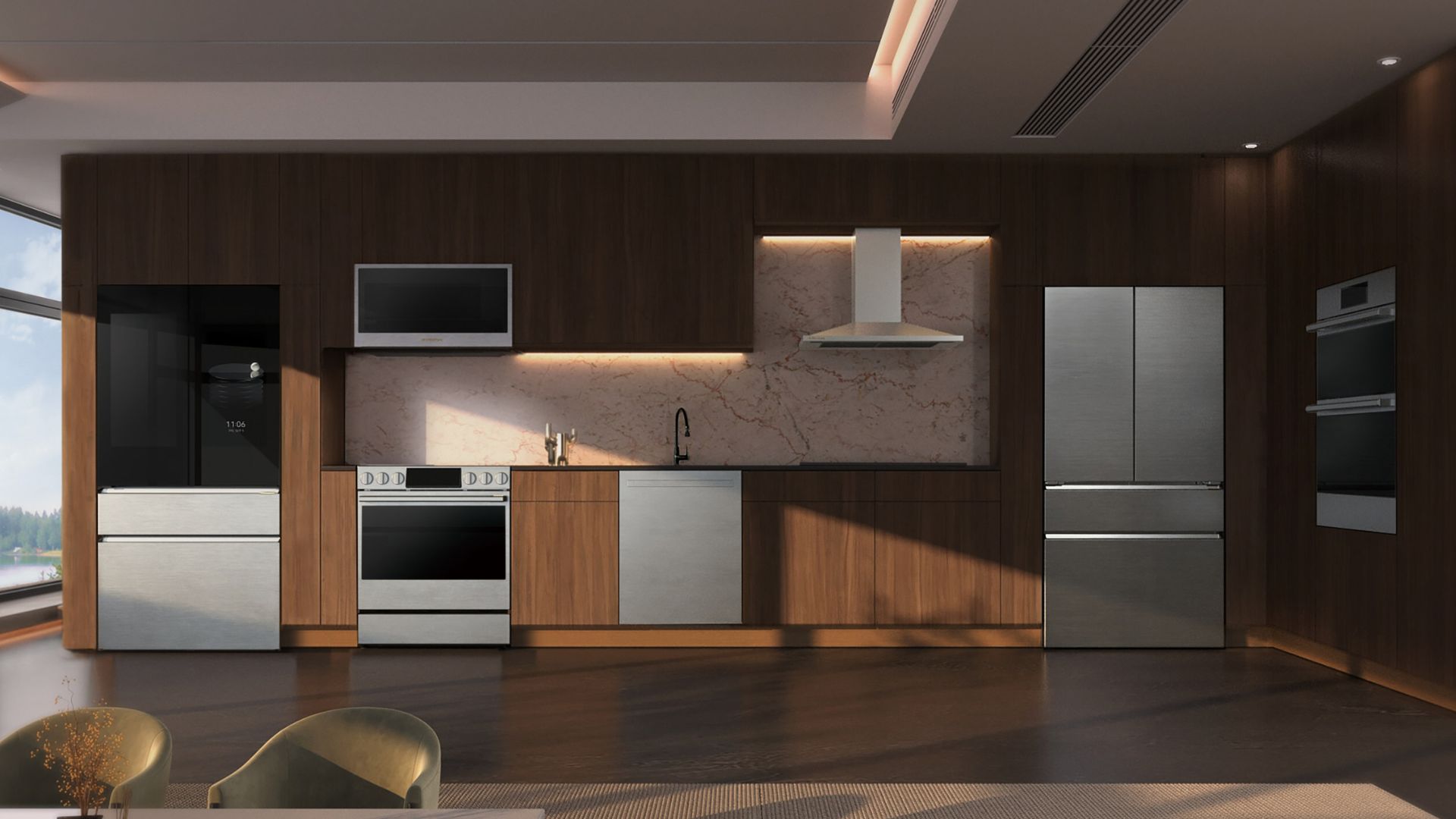I tested the PerfectDraft beer machine in the name of science — now I don't think I can live without it
Deeeeefinitely in the name of science…
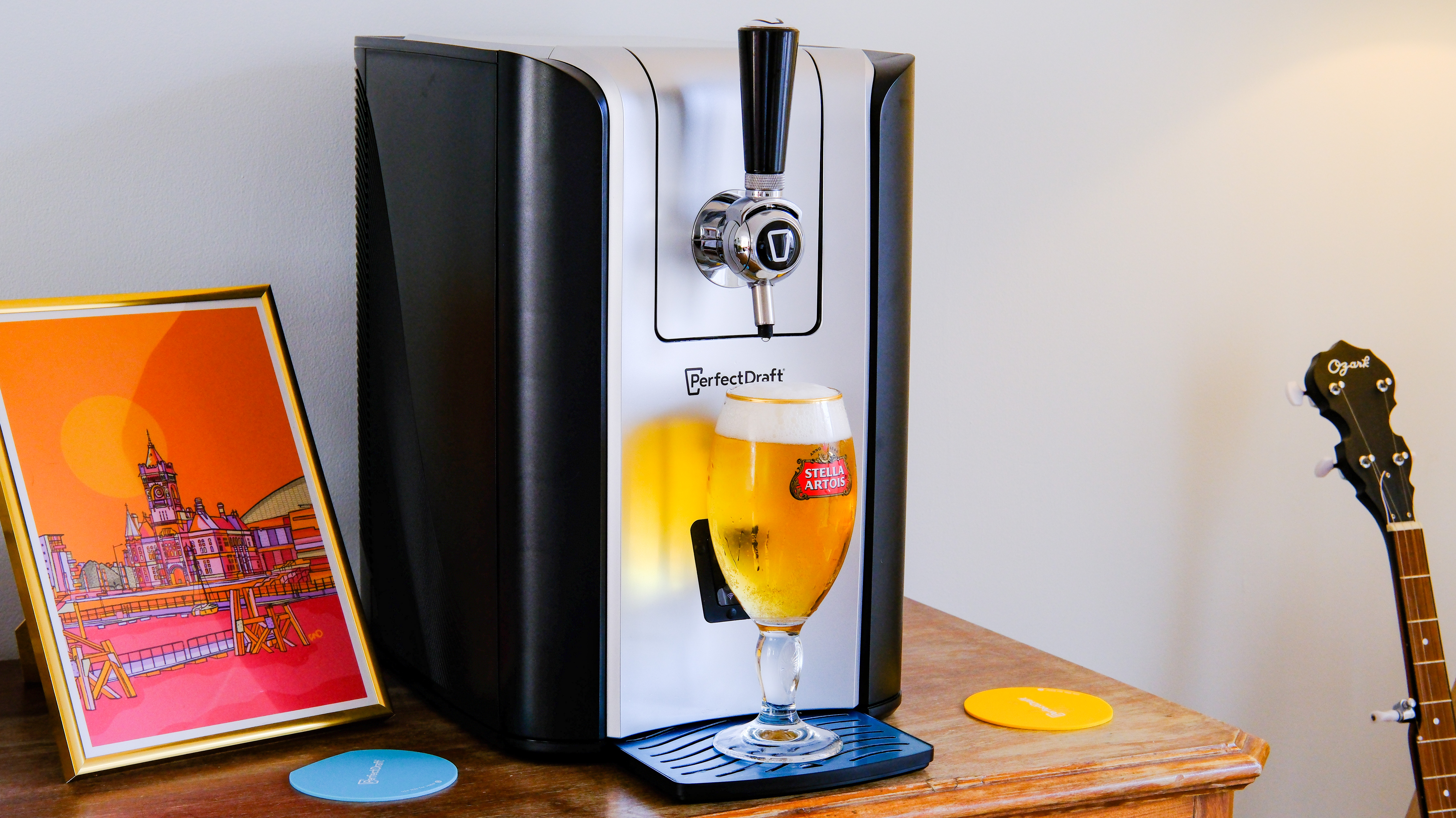
I’d consider myself a beer connoisseur. I’m from a Polish family, where typically booze is, uh, shall we say “celebrated”. My dad was once a home brewer, but a serious one. The lean-to at the side of my childhood home was full of brewing vessels, and I always remember the house smelling of hops. He’s passed his love of beer onto me, and I’m an avid enthusiast.
Here in the U.K., we have a lot of great beer to choose from. The stereotype is that we Brits drink only warm, flat ale, brewed and consumed the same way now as it was in the 18th century. Sure, you can still get traditional cask ale (although that side of the industry is in decline), but we also have a plethora of independent national, local and hyperlocal breweries creating amazing craft beer of all varieties.
To me, there’s no better way to drink any of those beers than fresh off the tap in a pub, bar or ale room. Which is why it kind of pains me to admit how much I love the PerfectDraft home keg system.
PerfectDraft: What is it?
You might be wondering why it pains me to love the PerfectDraft. To answer that, here’s a little bit of context.
PerfectDraft (previously known as the Philips PerfectDraft) is a home keg system that allows you to buy miniature kegs of beer that are essentially the same as you’d find in a pub, and pour it yourself. It delivers fresh pub beer at home. What could be more perfect? Right?

Well, PerfectDraft is owned by AB InBev. If you don’t know what that means, AB InBev is literally the biggest beer company in the world, owning and producing many of the beers you probably drink regularly. Budweiser, Bud Light, Stella Artois, Corona, etc. Essentially ‘big beer’. AB InBev is to the beer world what Nestlé is to the entire world: hated.
AB InBev, alongside Heineken and Molson Coors, are one of the corporate giants who buys out your favorite independent brewery — oftentimes moving production to a central location away from the original brewery, changing the water used and the historic individual brewing process and probably ruining the beer altogether. These days, in the U.K. at least, AB InBev like other big brewers is systematically lowering ABVs and ruining many of our cherished beers — true Leffe, we mourn you.
Get instant access to breaking news, the hottest reviews, great deals and helpful tips.
Drinking anything produced by AB InBev is, of course, anathema to my love of the U.K.’s fiercely independent beer scene. As is drinking draft beer in my home rather than supporting my local pub.
Probably the cheapest pint you’ll find
But none of us are perfect. It’s impossible to avoid AB InBev’s beers, just as it’s impossible to avoid using other capitalist globo-corps. Try living a day without subconsciously using Amazon Web Services. Find me one of the best phones that isn’t inherently tied to Apple or Google. We can’t beat ourselves up for using these companies. If we did, we’d be bruised all over.
Over time, it makes perfect *burp*.. financial sense.
Times are also hard for most of us. Economies are struggling here in the U.K. and in the States. And the PerfectDraft makes wildly good economic sense, in the long run at least.
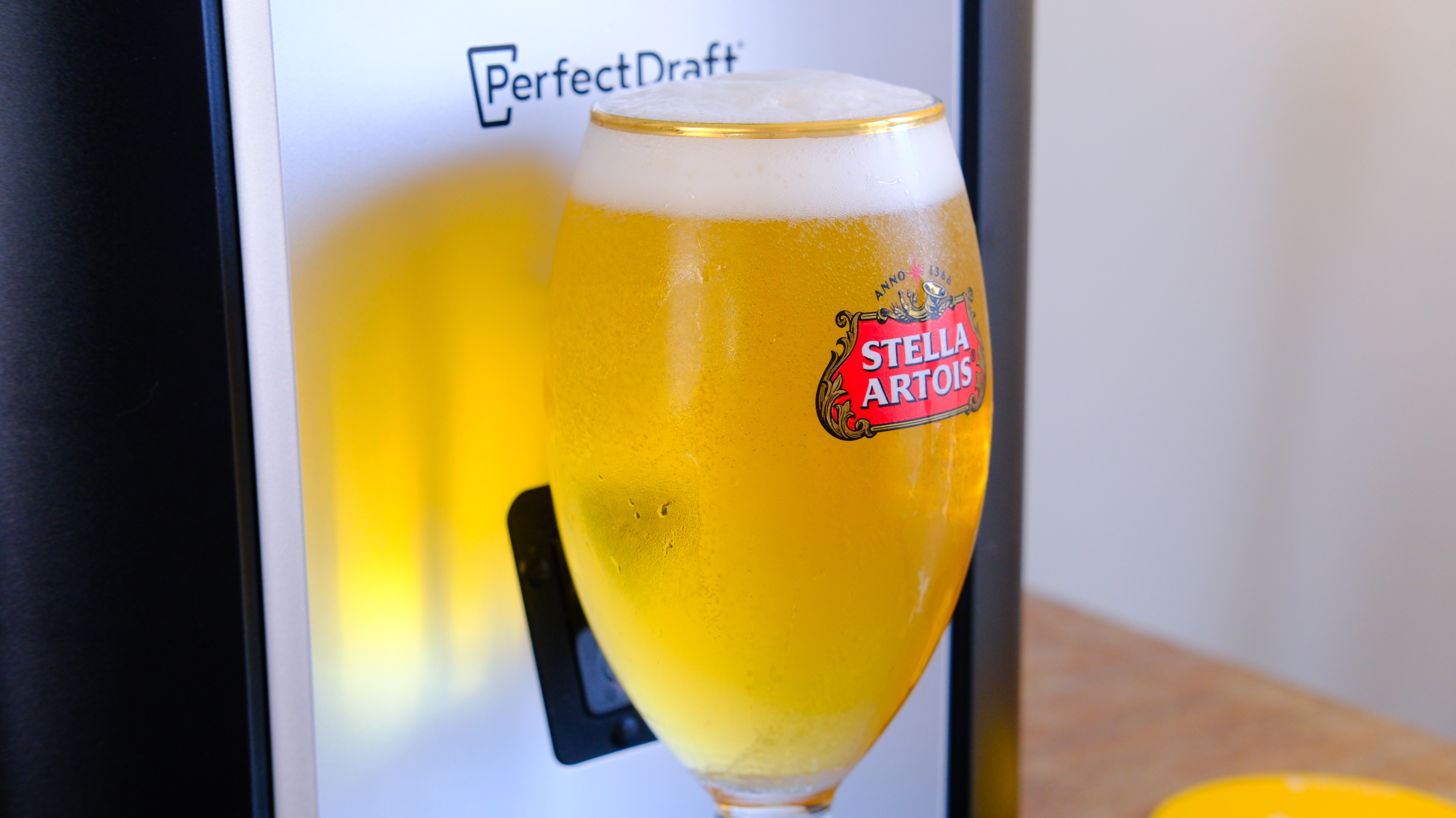
I’ve been testing the PerfectDraft Pro, which starts at £329 and always includes a 6L keg, with the price scaling depending on the keg you choose. Here in the U.K, you can also buy cheaper variants which start at £179 but offer slower keg cooling and only go down to 3°C. In the U.S., there’s only one variant, which equates to our Pro model. It costs $399 although it’s currently on sale for $299.
Here in U.K. cities, it isn’t uncommon to see a pint of Stella costing over £6, with craft beer costing upwards of £8-9, especially in London. When I visited Chicago and New York last year, I paid $6 for a Stella and $8 for a craft, then had to tip an extra $1 (an utterly wild concept to an Englishman).
The economics in the U.K. are super appealing, especially as you get £5 back per keg you return. Most kegs will therefore cost you £33-ish and you get 10.5 British imperial pints, so that's £3.14 per pint.
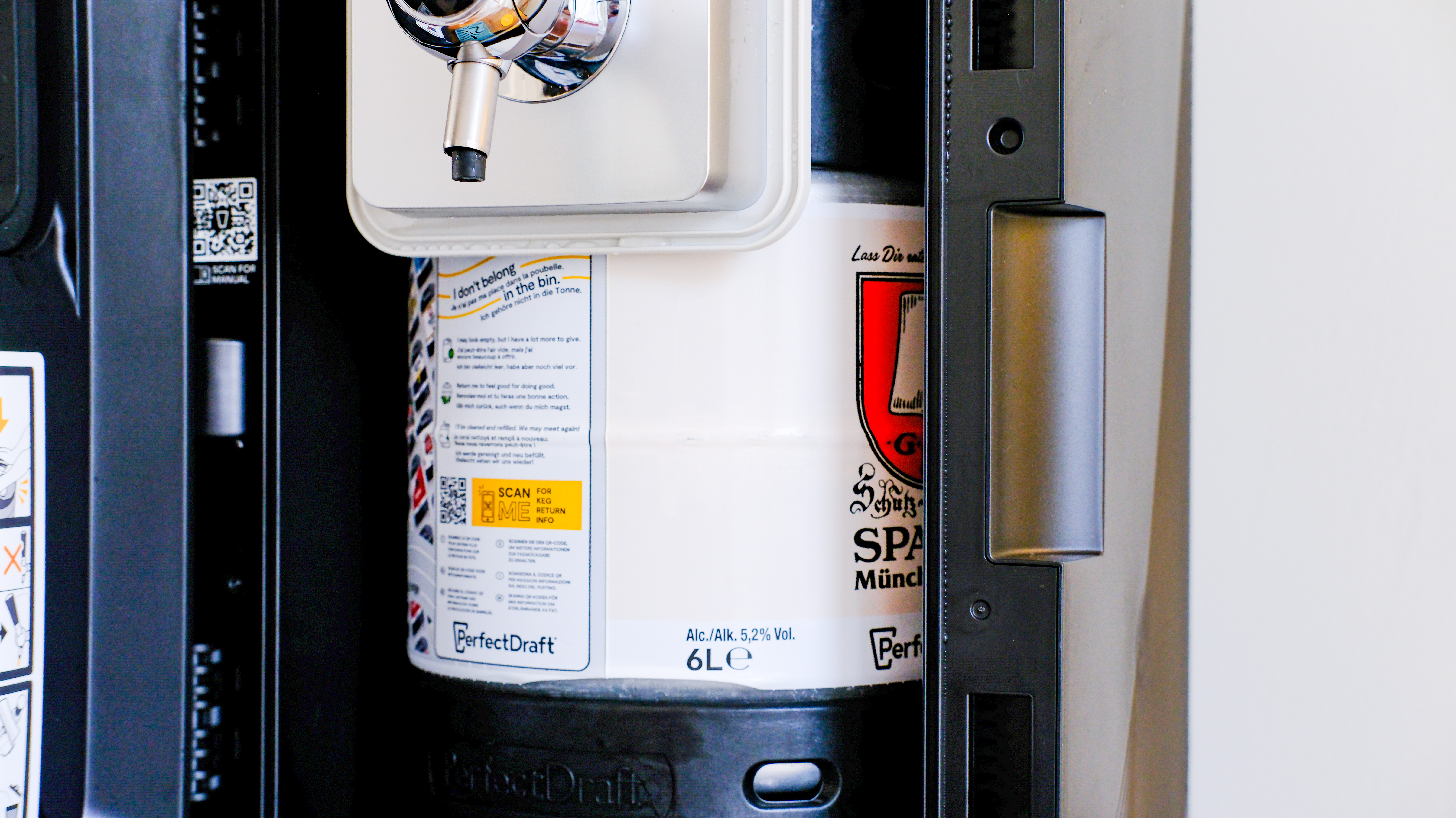
Let's say you drink two pints per week. Over 52 weeks, that's 104 pints. You'll need 10 kegs for that, but your first is always bundled in the U.K., so you need 9, for a sub-total of £297. Add on the £329 cost of the machine and the total is £626.
104 pints from a pub at £6 per drink works out at £624. So after a year, you're only £2 down, and the machine and pints have effectively paid for themselves. From there on out it's just cheap pints, babyyy!
In the U.S., where the kegs are a similar size and price, the pints are smaller and more expensive, and tips are expected for each drink, the economics are even more appealing.
Over time, it makes perfect *burp*.. financial sense.
So… what’s it like?
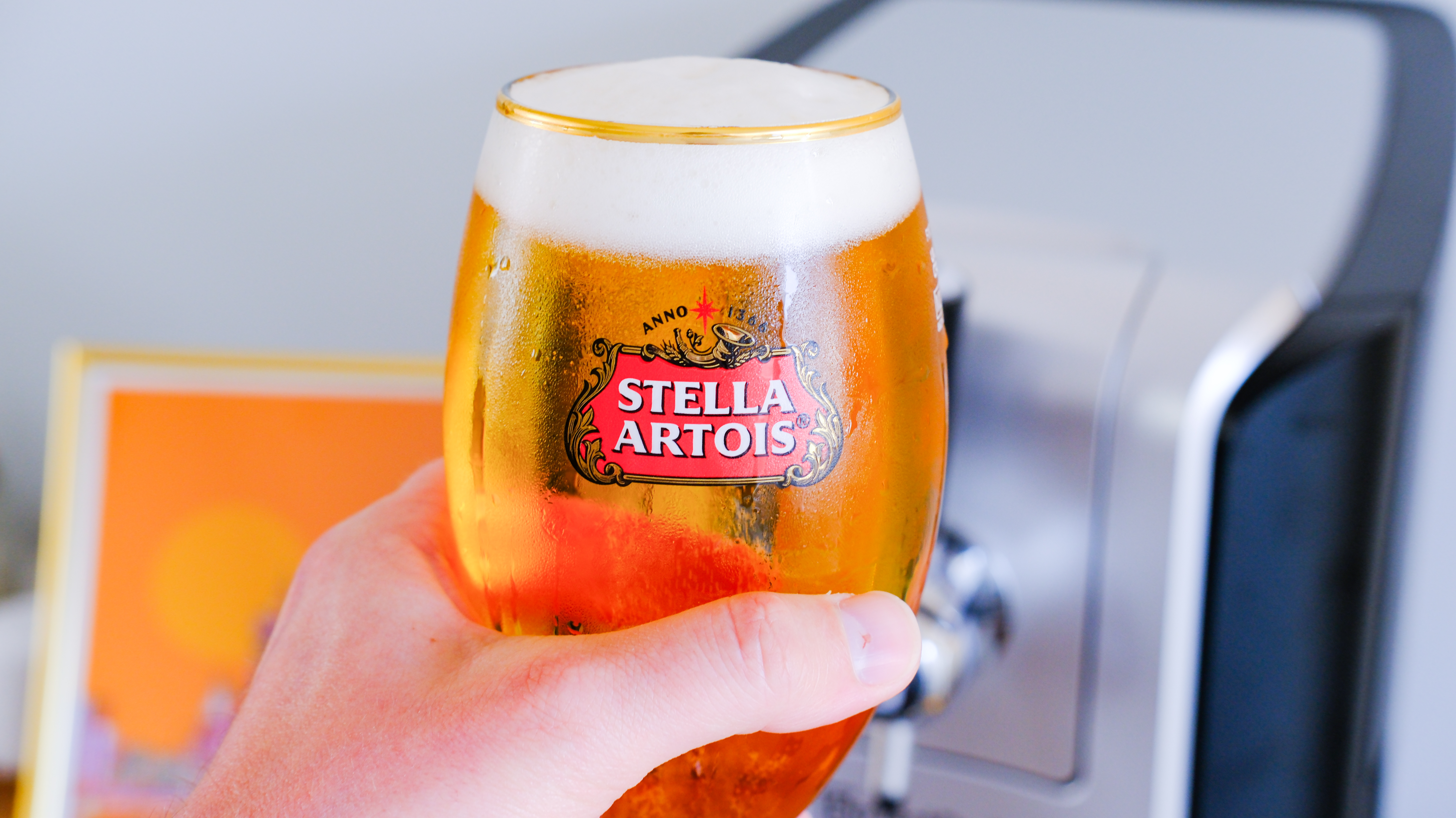
So good. Pub-fresh beer in your home! Who wouldn’t want that? I’ve worked through one and a half kegs now. For science, of course.
My first keg was Stella Artois, which came bundled with the machine. I’m partial to a Stella on occasion. It’s one of the most common beers in Britain, and to be honest it tasted fresher and cleaner on PerfectDraft than at my local chain pub.
Explainer: in the U.K., many of our pubs are owned by huge ‘chains’ that run thousands of venues. Often these are owned by national breweries and serve primarily that brewery’s beer, plus mainstream lagers. Chain pubs are notorious for lax beer line hygiene and not keeping beer at the right temperature. Oftentimes, it’s a roll of the dice as to whether your £6 will get you a nice, fresh beer, or a warm, nasty-tasting one.
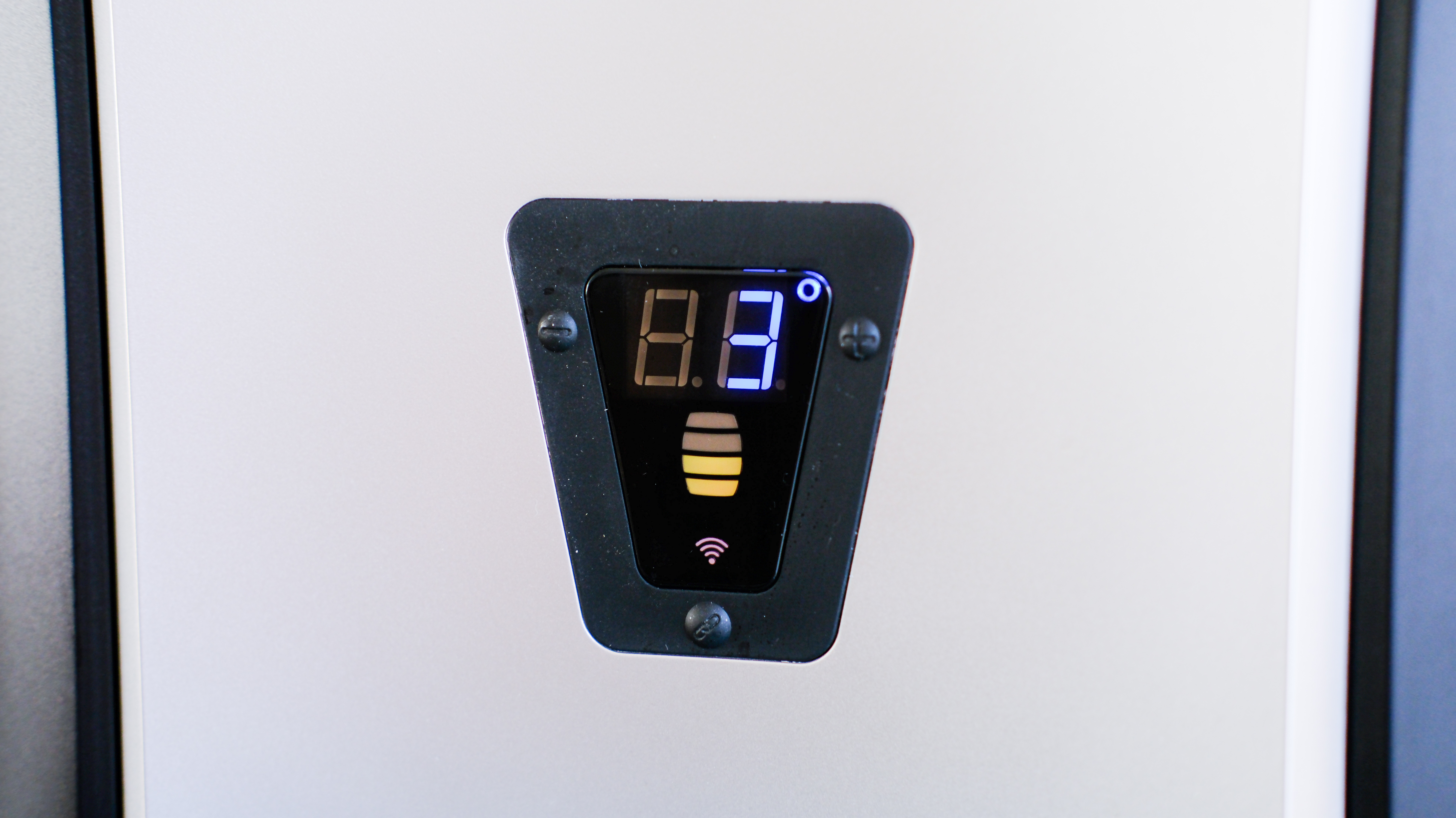
Having fresh-as-it-gets beer at the perfect 3C / 37F at home takes all the guesswork away, and is a novelty that still hasn’t worn off.
My second keg is Spaten, a gloriously crisp yet slightly sweet Munich Helles that’s been absolutely perfect for refreshing after-work drinks during the heatwave we’ve been having here in Britain this summer.
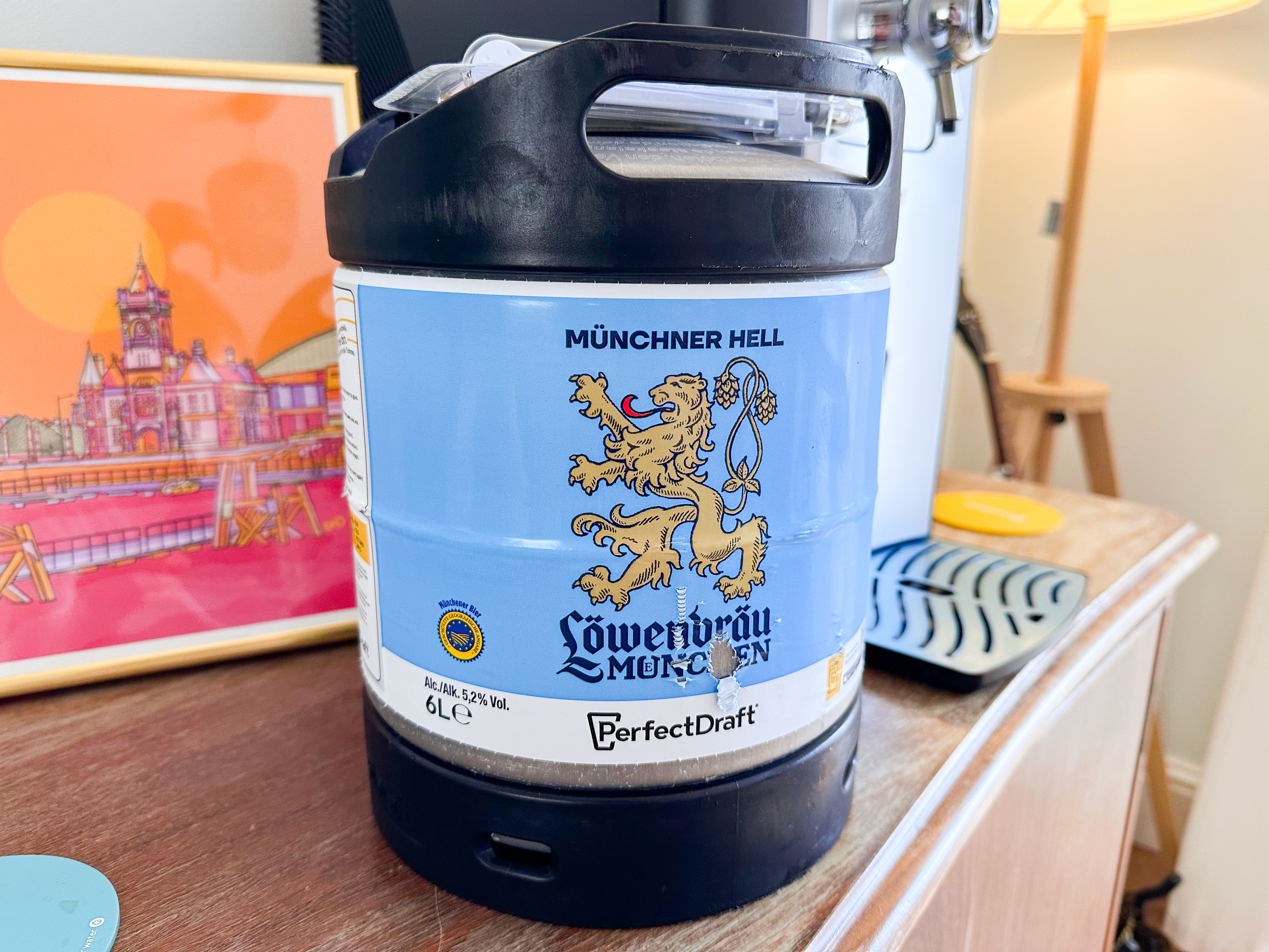
Next up, I've got a keg of Löwenbräu, to make the most of the fading longer, hotter days. Then I might move to something a little darker for the colder months. And that’s the bittersweetness of PerfectDraft being owned by AB InBev: there’s So. Much. Choice. IPAs, Belgian blondes, six-, seven-, even eight-percenters.
All in the pour
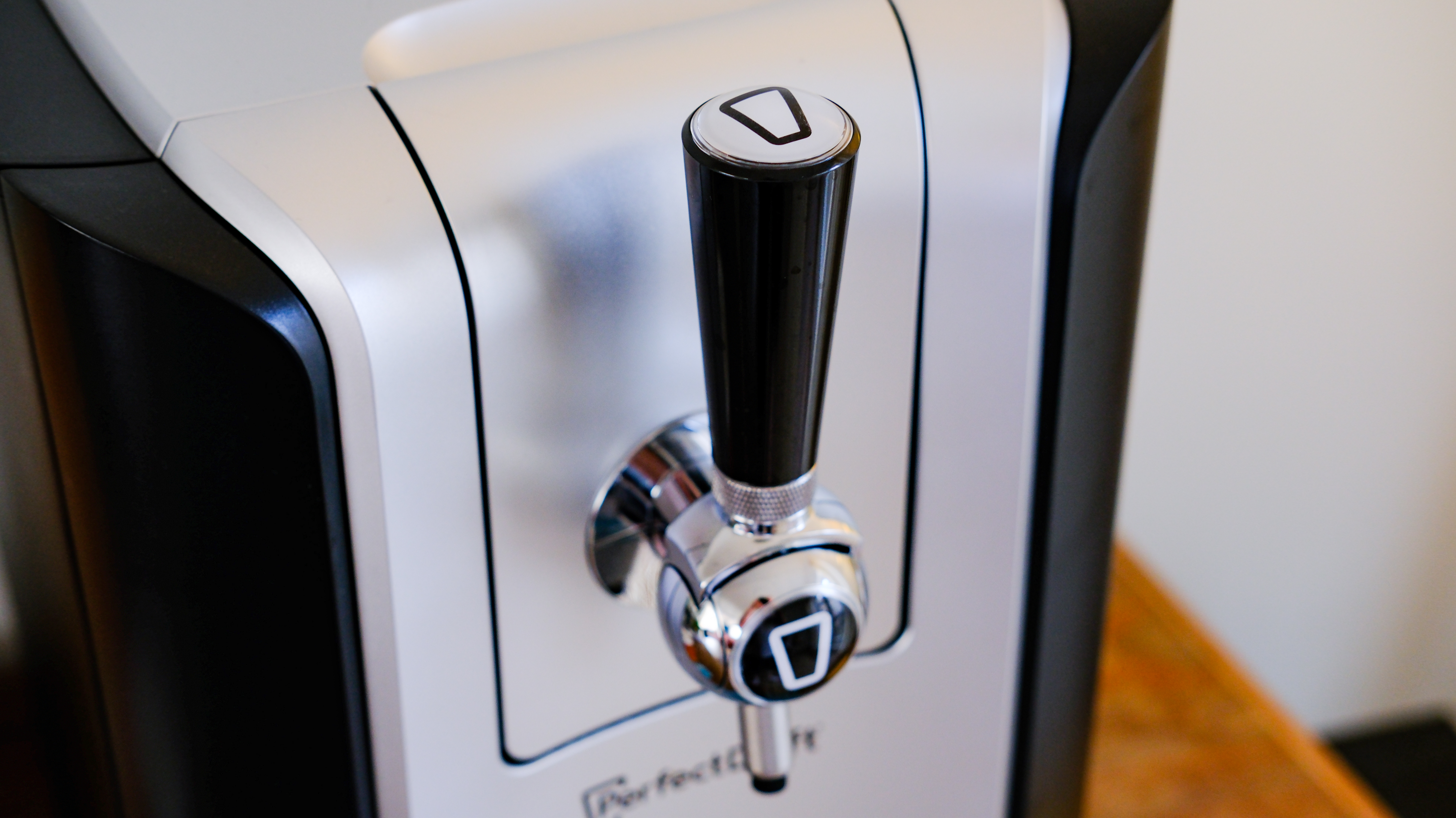
Contrary to popular American belief, we British are savages (that's no news to Europeans). We regularly ruin pretty much everything we come into contact with.
International football (soccer) matches: RUINED. Picturesque European towns in summertime: RUINED. Other countries’ national food: RUINED. Imported beer: RUINED. You’ll spend £7 on a beautiful imported German pilsner, only for the barman to pour it completely flat.
Here in the U.K. there’s a tendency for punters to expect, and bar staff to deliver pints with no foam head. People want their beer to the brim, presumably to get their money’s worth, which ruins many beers. I remember watching a German barman who worked in my local wince as he was asked to top up a perfectly-poured, inch-headed pilsner.

One of the most rewarding aspects of the PerfectDraft is pouring yourself. Not only learning to pour, but tailoring your pour properly, and just how you like it. If I want my Helles with a decent puck of foam on top, by jove I’ll have it.
I’ve worked on a bar before, so I can pull a pint. The PerfectDraft pours differently to a commercial tap, in that you have no real control over flow. It’s on or off. Once you realize that and just flip the tap, with your glass at 45-degrees, it’s super easy to nail a perfect pint.
Here to stay?
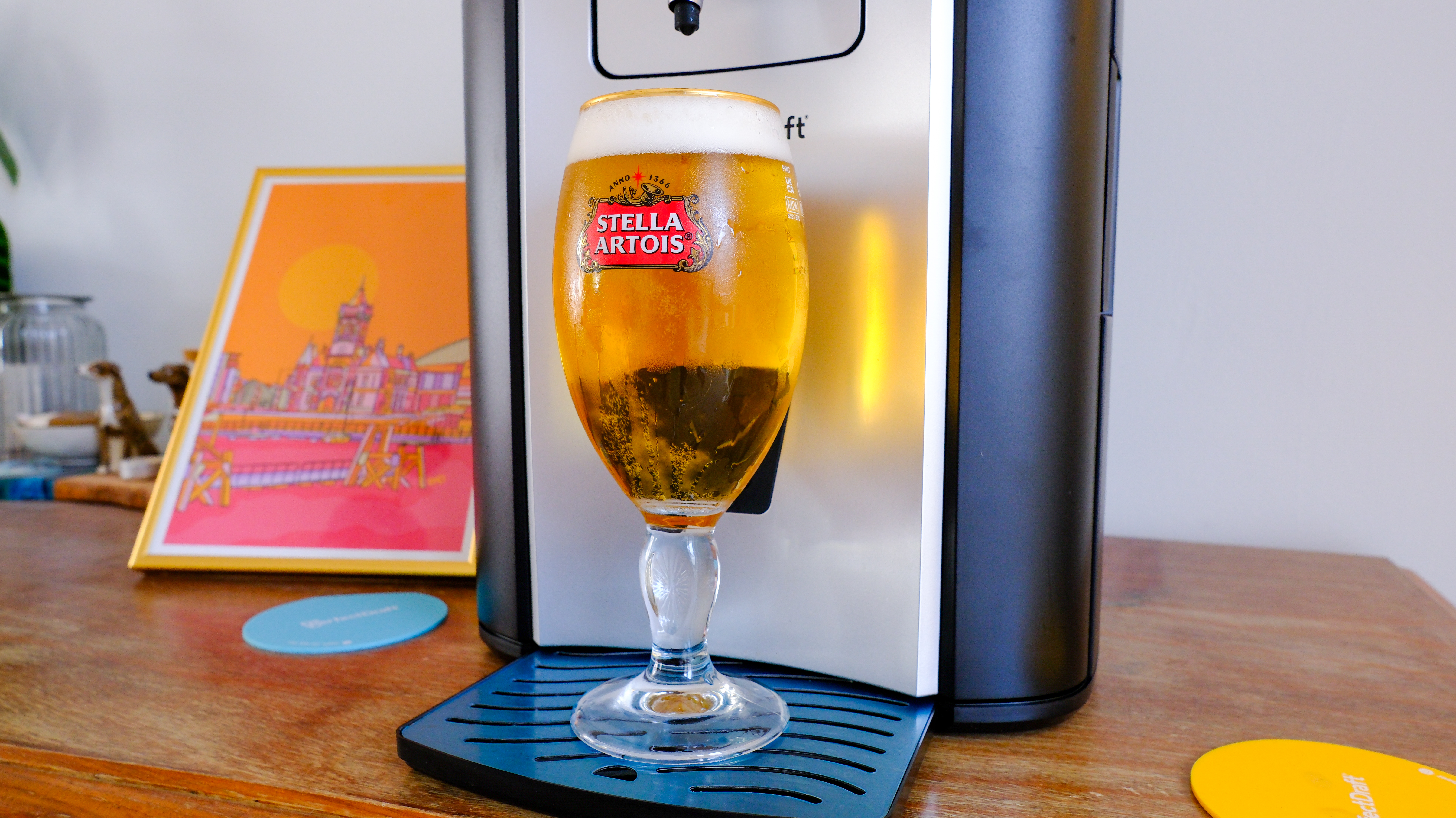
Not that I’m surprised, but I can’t see the PerfectDraft leaving my life anytime soon. And since testing began I’ve settled into an equilibrium of sorts, one which won’t see me failing to support my local independent pubs and breweries.
I’ve always had distinct uses for different types of pub. I would go to the local chain-owned pub for a pint of bog-standard corporate beer when I’m gasping for a drink; while going to my local specialty pub for a pint of something more refined — it’s an event, a special occasion. The PerfectDraft is replacing the former, not the latter.
Regardless of your ethical stance, there's no getting around how good the PerfectDraft is for beer drinkers. The quality and variety of the beer, and especially the economics. Cheers to that.
I'll be analyzing every element of the PerfectDraft in my upcoming full review. Stay tuned for that.
Meanwhile, follow Tom's Guide on Google News to get our up-to-date news, how-tos, and reviews in your feeds. Make sure to click the Follow button.
More from Tom's Guide

Peter is a Senior Editor at Tom's Guide, heading up the site's Reviews team and Cameras section. As a writer, he covers topics including tech, photography, gaming, hardware, motoring and food & drink. Outside of work, he's an avid photographer, specialising in architectural and portrait photography. When he's not snapping away on his beloved Fujifilm camera, he can usually be found telling everyone about his greyhounds, riding his motorcycle, squeezing as many FPS as possible out of PC games, and perfecting his espresso shots.
You must confirm your public display name before commenting
Please logout and then login again, you will then be prompted to enter your display name.
